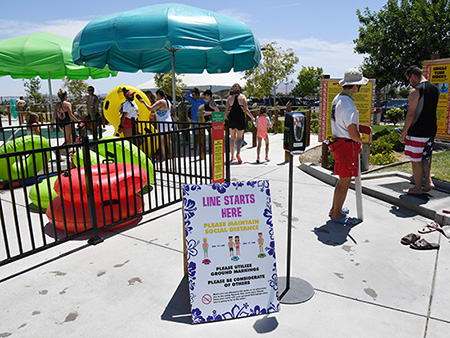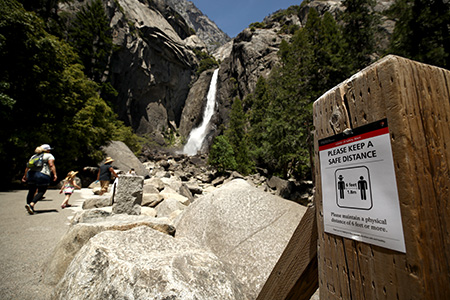Editor's Note: The information published in this story is accurate at the time of publication. Always refer to uab.edu/uabunited for UAB's current guidelines and recommendations relating to COVID-19.
 Destinations are opening up for summer vacation, but does that mean it is safe to travel with your family?
Destinations are opening up for summer vacation, but does that mean it is safe to travel with your family?
The most important consideration while traveling during COVID-19 is weighing the risk, says Curry Bordelon III, DNP, assistant professor in the University of Alabama at Birmingham School of Nursing.
Whether traveling by plane or car, what are the risks related to your destination? If you travel by air, Bordelon says, you will need to take into account the number of available flights, how many connections, the size of the airport and transportation from the airport to your destination. Will you use a ride share, bus or taxi, or rent a car? Are you staying at a hotel or destination resort?
“We often take these steps for granted, but now we have to pay close attention when deciding our travel plans,” Bordelon said. “Despite the fears associated with travel and crowds, there are methods to protect yourself and your family while enjoying some much-needed time away.”
Each family or group should determine what risks they find acceptable in order to vacation. Bordelon shares his recommendations and what he and his family feel comfortable doing during the pandemic.
Airlines
Many airlines have COVID-19 plans in place, such as limited flights, restrictive seating and alternative boarding processes. Most are recommending face masks, at minimum, and have enhanced cleaning of surfaces between passengers. Some airports have added additional hand-cleaning stations and offer masks for travelers.
Bordelon’s top concern for air travelers? Pay attention to all the surfaces you touch during the flight process.
“Avoid touching surfaces with hands — each touch point is a potential for transmission. Use hand sanitizer or alcohol wipes to clean surfaces you are in contact with, such as seats, hand rests, seat backs and tray tables, along with overhead and lavatory handles. Use automatic doors, and avoid touching the handrails on escalators or railing in trains. If you do need to touch a surface, be sure to hand-sanitize and avoid touching your face. TSA is allowing additional volume for hand sanitizer.
“Maintain social distancing and wear masks in public; be sure to bring additional masks with you. I feel safe traveling by air domestically but continue to avoid foreign travel at this time. I carry an extra mask and hand sanitizer in my carry-on backpack.”
Automobile
For shorter trips, or if transmission risks are considered too great for an individual to travel by air, people may consider driving to a destination. If you choose to travel by automobile, consider the steps necessary to your destination, Bordelon says.
“Everyone has a road distance limit, especially with children. You will need to refuel, stop for food and take bio-breaks.
“Keep hand sanitizer in your door compartment. This will allow you to quickly access it following a stop. I keep a hand pump sanitizer in each of the driver and passenger car doors for quick access. Keep extra masks in the car just in case.”
 Lodging
Lodging
This can be tricky, Bordelon says. There are so many options for travelers, from hotels to personal rentals — the key is to do your homework. Larger hotel chains have access to housekeeping and environmental services staff to clean between guests. Smaller hotel chains or personal rentals may not have the same extensive cleaning ability. All are required to illustrate how they are protecting guests, he says.
“Consider bringing surface wipes to clean surfaces within the room. Use your elbow or sleeve to select the elevator doors. Avoid crowded spaces in elevators, lobby, pool areas, etc. Wear a mask in public where you can. I am comfortable staying at most large hotel chains.”
Dining out and entertainment
We all look forward to this when we travel; in fact, for most, that is the reason we travel, for “food, family and fun,” Bordelon said. For larger entertainment venues, such as amusement parks and sporting events, restrictions remain in place. Water parks can be a fun destination this time of year; most zoos and kid venues remain closed or are starting the re-entry process. Be smart, Bordelon says.
“Wear your mask when in crowds or to get to your table at the restaurant. Once there, feel free to remove it and enjoy your meal. Be sure to wash your hands before you eat — hand sanitizer is perfect for the dinner date. We have dined at a few different restaurants since reopening and felt comfortable doing so.
“For larger venues, do your homework. Explore their re-entry plans and available activities. Be prepared and patient. We are big fans of the zoo, botanical gardens, local parks and neighborhood pools, and are planning to visit each of our favorites as they begin to reopen.”